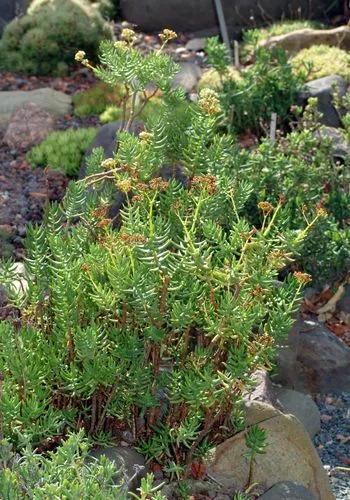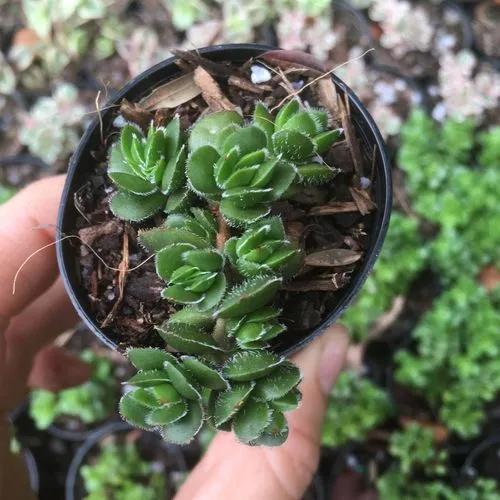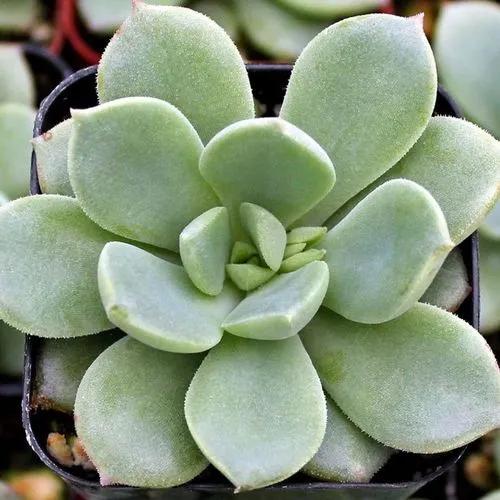Sempervivum tectorum, commonly called house leek (houseleek), is native to the mountains of southern Europe. It is an evergreen, mat-forming succulent that typically forms rosettes (to 4” across) of 50-60 thick glabrous leaves (to 1.5-3” long) that are sometimes purple-tipped. Rosette foliage typically grows to 4” tall. The mother rosette (hen) spreads in all directions by horizontal stems to form offsets (chicks). In summer, leafy, pubescent, upright flowering stalks rise from the hen to as much as 12” tall topped with cymes of red-purple flowers. After the hen flowers, it sets seed and dies leaving the chicks to fill in the space and spread, hence the sometimes used common name of hens and chicks for this plant. Plants are primarily grown in gardens for their attractive and unusual foliage. In Europe, sempervivum was once planted on roofs of houses for a number of reasons, including warding off lightning/fire, holding slates in place or providing emergency salad food (edible leaves as roof leeks) in winter. Genus name comes from the Latin words semper meaning always and vivus meaning alive or living.
Sempervivum Hens And Chicks Care
Sempervivum



How to Care for the Plant

Water

Water lightly, but you don’t need to water newly planted Hens and Chicks every day, the way you would with non-succulents. Hens and Chicks need to let their roots dry out between waterings.

Pruning

Occasionally

Fertilizer

No fertilizer is needed.

Sunlight

For best growth and flowering, Hens and Chicks need plenty of sunlight, so place the container in a room with a window.

Soil

Soil Type: Sandy, well-drained Soil pH: Neutral to acidic

Temperature

Grow lights also can help keep your sempervivum healthy. The plants love typical indoor temperatures of around 65 to 75 degrees.

Container

Hens and chicks, also called Sempervivum, are many gardeners all-time favorite plants to grow in containers.

Additional

The hen and chicks Sempervivum isn't known to contain any toxic compounds. It's considered a safe plant to grow around pets and children. The American Society for the Prevention of Cruelty to Animals (ASPCA) states hen and chicken Sempervivums aren't toxic to dogs, cats, or horses. Hens and Chicks (Sempervivum tectorum) are low growing evergreen succulent plants that look a little like rubbery roses. They are considered alpine or rock garden plants, because of their hardiness and drought resistance. The original rosette, the 'Hen' produces tiny rosette offsets that are known as the 'Chicks. '

Popularity

1,251 people already have this plant 245 people have added this plant to their wishlists
Discover more plants with the list below
Popular articles






